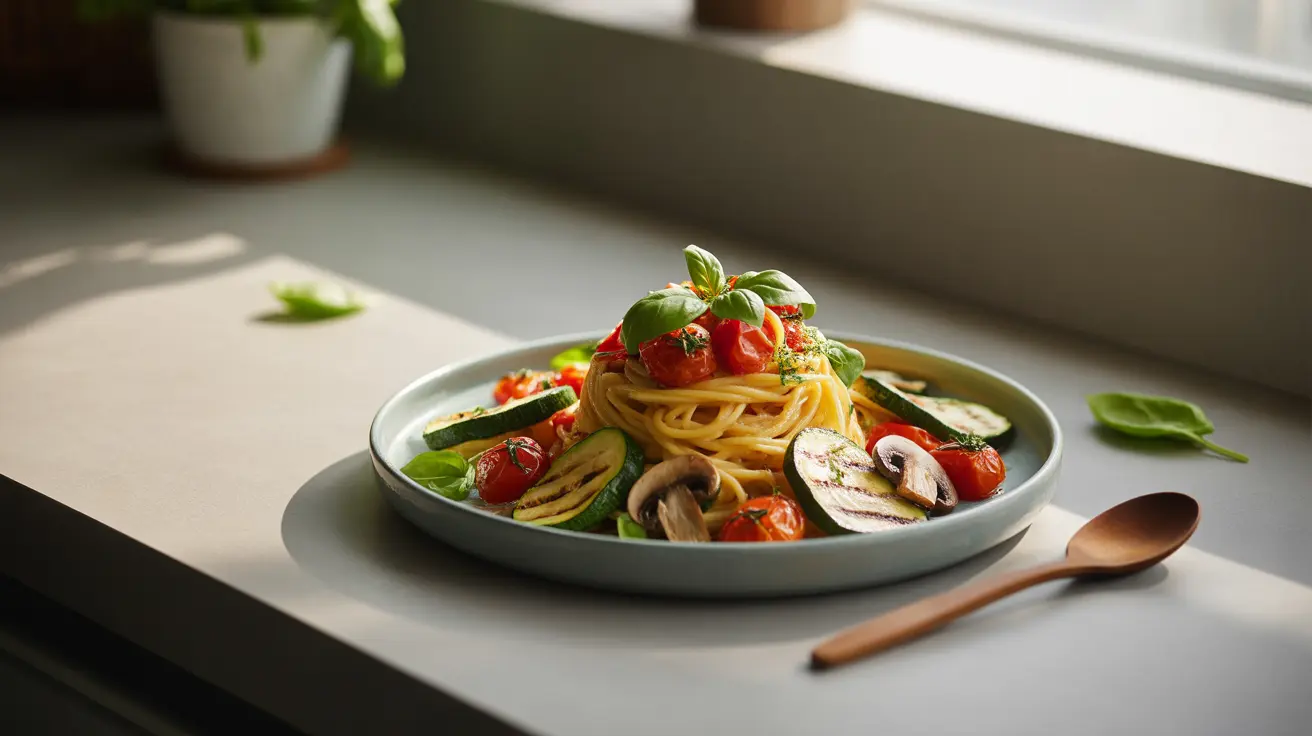Transform your pasta dishes into nutritional powerhouses with the right selection of healthy pasta toppings. Whether you're looking to boost your vegetable intake, increase protein content, or manage your weight, choosing thoughtful toppings can elevate both the nutritional value and flavor of your meals.
In this comprehensive guide, we'll explore various wholesome topping options that can help you create balanced, satisfying pasta dishes without sacrificing taste or nutrition.
Nutrient-Rich Vegetable Toppings
Adding vegetables to your pasta is an excellent way to increase fiber, vitamins, and minerals while keeping calories in check. Consider these nutritious options:
- Roasted cherry tomatoes
- Sautéed mushrooms
- Grilled zucchini and bell peppers
- Wilted spinach or kale
- Roasted butternut squash
- Broccoli florets
- Caramelized onions
For maximum nutritional benefit, aim to include at least two different colored vegetables in your pasta dish. This ensures a diverse range of nutrients and antioxidants.
Healthier Sauce Alternatives
Traditional cream-based pasta sauces can be heavy in calories and saturated fats. Here are some healthier alternatives that maintain flavor while boosting nutrition:
- Greek yogurt-based cream sauce
- Olive oil and herb combinations
- Homemade tomato sauce
- Pesto made with fresh herbs and nuts
- Pureed vegetable sauces
Using Greek yogurt as a base for cream sauces adds protein while reducing calories. Olive oil provides healthy fats and can be enhanced with fresh herbs for maximum flavor impact.
Lean Protein Options
Adding protein to your pasta helps create a more balanced meal and increases satiety. Consider these lean options:
- Grilled chicken breast
- Salmon or other fatty fish
- Turkey meatballs
- Chickpeas or white beans
- Shrimp or scallops
- Tofu or tempeh
These protein sources can be seasoned with herbs and spices to complement your chosen sauce and vegetable toppings.
Herbs, Spices, and Aromatics
Enhance flavor without adding calories using these fresh herbs and seasonings:
- Fresh basil
- Oregano
- Thyme
- Garlic
- Red pepper flakes
- Black pepper
- Fresh parsley
Combining different herbs and spices can create complex flavor profiles that reduce the need for heavy sauces or excess cheese.
Whole Grain and Alternative Pasta Options
The base of your pasta dish matters as much as the toppings. Consider these nutritious alternatives:
- Whole wheat pasta
- Chickpea pasta
- Lentil pasta
- Quinoa pasta
- Brown rice pasta
These alternatives provide more fiber and protein than traditional white pasta, helping to keep you fuller longer and support better blood sugar control.
Frequently Asked Questions
What are some healthy vegetable toppings I can add to pasta to boost nutrition without adding calories? Nutrient-rich, low-calorie options include roasted cherry tomatoes, sautéed mushrooms, spinach, broccoli, and bell peppers. These vegetables add fiber, vitamins, and minerals while keeping the dish light.
How can I make pasta sauces healthier using ingredients like Greek yogurt or olive oil? Replace heavy cream with Greek yogurt for a protein-rich, creamy sauce. Use olive oil as a base for lighter sauces, combining it with fresh herbs, garlic, and lemon juice. These alternatives provide healthy fats and protein while reducing calories.
What lean protein options work best as pasta toppings for a balanced meal? Grilled chicken breast, shrimp, salmon, turkey meatballs, and legumes like chickpeas or lentils are excellent protein options. They add satiety and essential nutrients while keeping the dish balanced.
Which herbs and spices can enhance pasta flavor while keeping it low-calorie and nutritious? Fresh basil, oregano, thyme, garlic, red pepper flakes, and parsley can add robust flavor without calories. These herbs also provide antioxidants and anti-inflammatory benefits.
What are the benefits of choosing whole grain or legume-based pasta with healthy toppings for weight management? Whole grain and legume-based pastas offer higher fiber and protein content, which helps maintain steady blood sugar levels and promotes longer-lasting fullness. When combined with nutritious toppings, these pasta alternatives support better portion control and sustained energy.




